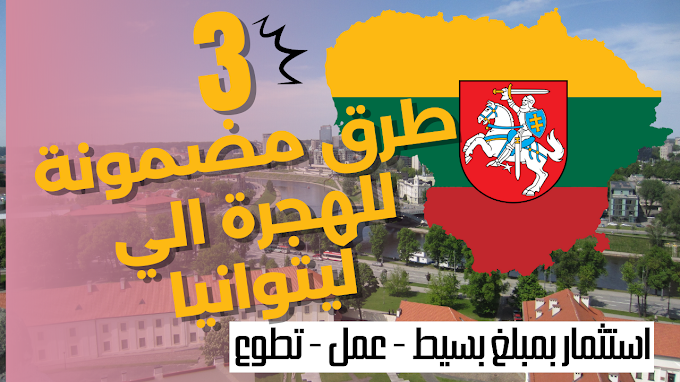10 best places to visit in Istanbul Turkey
1- 1- Topkapı
Palace
Fresh from his conquest of
Constantinople, Mehmet II built Topkapı Sarayı as his main residence between
1460 and 1478. He planned it as a series of pavilions in four courtyards – a
tribute in stone to the tent encampments of his nomadic forebears. Mehmet’s
palace was also the seat of government, and had a college for training
officials and soldiers. While government moved across the road to the Sublime
Porte in the 16th century, Topkapı continued as the sultan’s palace until Abdül
Mecit I moved to Dolmabahçe Palace in 1856.
Built in 1478, this gate is the main entrance
to the palace, with gate[1]keepers’ quarters on
either side. An apartment belonging to Mehmet II above the gate was destroyed
by fire in 1866.
Harem A maze of rooms and corridors
(above), the Harem was a closed world occupied by the sultan’s wives,
concubines and children.
First Courtyard (Alay Meydanı) This
vast outer courtyard takes in Gülhane Park, Sirkeci, the church of Haghia
Eirene (Aya İrini Kilisesi) and the imposing Archaeological Museum
2- 2- Haghia
Sophia
Haghia Sophia,
the Church of Holy Wisdom (Ayasofya in Turkish), is an awe-inspiring expression
of religious faith and one of the world’s foremost architectural wonders. The
first church on the site burned down in 404, the second was destroyed during
the Nika Riots of 532, but the third – inaugurated by Emperor Justinian in 537
– stands firm today, despite countless wars and earthquakes, a blazing beacon
to the faith of its creators. The church was converted into a mosque in 1453.
Since 1935, it has been a museum.
Exterior Its
deep red walls are surmounted by a central dome and flanked by two semidomes on
both sides. The main building is much as it was in the 6th century – except for
the buttresses added to secure the structure, which, unfortunately, partly
obscure the original shape (right).
Galleries Women
used the galleries for prayer. There are splendid votive mosaics in the south
gallery: look out for Christ Pantocrator (Almighty) with John the Baptist and
the Virgin Mary; and Jesus Christ flanked by Empress Zoe and Emperor
Constantine IX Monomachus (below).
3- 3- Blue
Mosque
Sultan Ahmet I
was only 19 when he commissioned this superb mosque, known in Turkish as the
Sultanahmet Camii. So great was his enthusiasm for the project that at times he
even worked alongside his labourers. With his architect, Sedefkar Mehmet Ağa,
he wanted to surpass the Süleymaniye Mosque Complex (the work of Ağa’s teacher,
Sinan) and Haghia Sophia. The result of their labours, completed in 1616, has
become one of the most celebrated mosques in the world, known widely as the
Blue Mosque because of the blue İznik tiles in the interior.
Entrance The
mosque’s main entrance is for practising Muslims only. Separate entrances for
visitors of other faiths are around the side of the mosque.
4- 4- Archaeological
Museum
The national collection of one of
the world’s most ancient and enthralling countries naturally promises something
special, and this fabulous museum does not disappoint. A world-class collection
spanning 5,000 years, it was founded in 1881 by Osman Hamdi Bey, the son of a
Grand Vizier, fuelled by the realization that European archaeologists and treasure
hunters were walking off with much of the Empire’s heritage. There are three
sections: the main museum, the Tiled Pavilion (Çinili Köșk) and the Museum of
the Ancient Orient
Sidon Sarcophagi Osman Hamdi Bey
discovered this remark[1]able group of 5th- and
4th-century-BC sarcophagi in Sidon (modern-day Lebanon) in 1887.
5- 5- Grand
Bazaar
From the painted arches to the
shopfronts gleaming with lanterns, piled with carpets or heaped with spices,
the Kapalı Çarşı is a fantasy of Eastern opulence. Founded in 1461 by Sultan
Mehmet II, the bazaar was designed as the trading heart of an empire. In
addition to shops, banks, storerooms and cafés, it had mosques, travellers’
accommodation, a bathhouse and a school. Destroyed several times by earthquake
and fire, it has always bounced back. It offers a compelling and entertaining –
if potentially expensive – day out
İç Bedesten This was the bazaar’s
first building (right), a Byzantine structure converted in 1461 into a sturdy
lock-up in which jewellery was traded and slaves were auctioned. Today, it is
used to sell precious goods such as antiques and rare icons.
6- 6- süleymaniye
Mosque Complex
One of the
finest creations of the Ottoman Empire’s greatest architect, Sinan, Süleymaniye
Camii was built in 1550–57 for Süleyman I. This hilltop mosque was constructed
as part of a charitable foundation (külliye). The mosque’s dome and minarets
dominate the skyline in a matchless display of imperial power, while its
delicate calligraphy, stained-glass windows and decorative carvings add a
lightness of touch. Süleyman and his wife Roxelana are buried in tombs in the
courtyard.
Mosque Interior
The interior is simple and serene. The blue, white and gold dome (right)
contains 200 stained[1]glass windows. The
mihrab and pulpit are made from white marble with İznik tiles.
7- 7- Church
of St Saviour in Chora
The Church of St Saviour in Chora is
home to one of the world’s finest collections of Byzantine art: more than 100
magnificent mosaics and frescoes depicting biblical images. They were com -
missioned in 1315–21 by Byzantine statesman Theodore Metochites, who also
restored the 11th-century church on the site. The church was converted into a
mosque in 1511 and is known by locals as Kariye Mosque (Kariye Camii). Its
works of art slipped into obscurity until they were rediscovered in 1860.
Restoration began in 1948.
8- 8- Çemberlitaş
Baths
No stay in Istanbul would be
complete without a bout of steaming, soaping, scrubbing and massaging in a
Turkish bath (hamam). Çemberlitaş, built in 1584, is commonly hailed as one of
the most beautiful. Designed by Sinan, it was commissioned by Selim II’s wife,
Nurbanu Sultan, as a way of providing financial support for the Atik Valide
Sultan Mosque in Üsküdar (see p100), of which she was sponsor. Today,
Çemberlitaş is still used by Turks, but is most popular with tourists and
photographers – it’s a regular location for film and fashion shoots.
9- 9- Dolmabahçe
Palace
In 1843, Sultan Abdül Mecit, who
wanted to reinvent the Ottoman Empire in a European image, employed Armenian
architects Garabet and Nikoğos Balyan to build a luxurious new palace on the
Bosphorus shore. Dolmabahçe Sarayı, completed in 1856, is the result. Luxurious
it certainly is, with 285 rooms and 43 reception halls, and lavish decoration
in gold and crystal that rivals the Palace of Versailles in France. Ironically,
this extravagance hastened the end of the Empire, and the last sultan fled from
here into exile in 1922.
11 10- Bosphorus
Cruise
The Istanbul skyline is justifiably one of the most famous cityscapes in the world and, while there are many places from which to admire it, by far the best is the deck of a boat on the Bosphorus. After the bustle of the city centre, a trip up the Bosphorus gives you an entirely different perspective on the city. Give your lungs a break from the traffic fumes and your feet a rest from trudging pavements. Take the local ferry for a modest fare, and spend a day floating serenely along the straits past magnificent shores and wooden villas.
























0 Comments